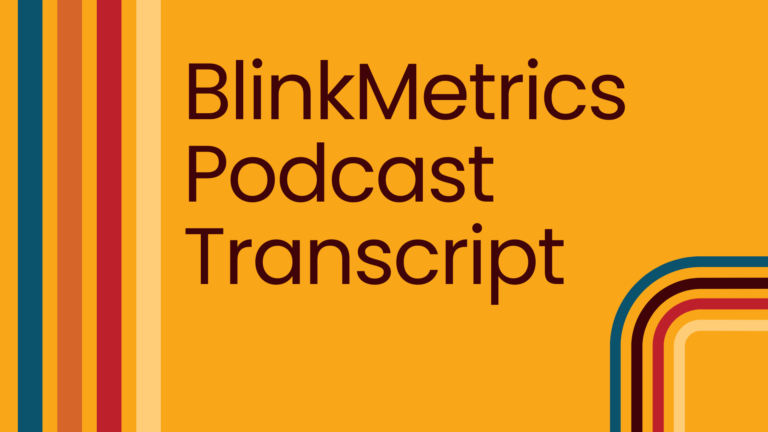According to some sources, there are over 75,000 startups based in the U.S. as of 2024.* Each and every one of these startups is a massive investment and – sometimes – the most important thing in a person’s life. Sorry to all those neglected friends, family, spouses, pets, housework…
As startups and small businesses start to expand, they encounter one of the scariest and most thrilling experiences in the life of a business…
Hiring new employees.
How to Hire & Employ People with Confidence
Without a doubt, one of the most complicated parts about being a founder is thoughtfully and effectively growing the team.
How on earth do you know if you’re doing it right? What if you hire someone and they suck? When will you know for sure whether you’ve made a huge mistake or a wildly successful bet on an almost complete stranger?
After all, nearly one in five startups fail due to problems within the team.*
Some companies hire based on gut instinct and qualitative assessments exclusively, and they’re in good company. GREAT company even. When founders have given up so much for their companies, the deeply personal and expensive task of hiring can be complicated and riddled with missteps. The first thing that comes to mind is rarely (if ever) data and analytics. Founders want to choose people to be on the team. What does data have to do with it?
Gut Instinct vs. Data Analytics: Is One Better Than the Other?
This is where we absolutely must jump in to reset the belief that gut instinct should prevail in employment conversations and decisions.
Now, we’re not recommending you ignore intangibles like soft skills, personality, or culture match. On the flip side, we’re not recommending that you use data exclusively, either. Building a strong and capable workforce is directly correlated to the proper understanding and implementation of both your own judgment and proven data practices. It’s a true superpower and something that takes time to cultivate and wield effectively. The ideal outcome is to make the absolute best decisions possible for your company, using all the tools at your disposal.
So, if you’re ready to reconsider the role data plays in your hiring decisions and the ongoing management of your most valuable asset – your human resources – read on!
The Top 3 Metrics We Track (And the Tools We Use to Do It)
New Hire Progression – Help Scout
We’ve said it before and we’ll say it again: we love Help Scout for managing our customer support communications. When we bring on new customer success teammates, there are clear indicators that let us know how our new hire is progressing. These include metrics like average response time, average time to resolution, and ticket complexity level.
Note: Always make sure to triangulate your metrics for context! It’s easy to make mistakes in measurement if not given enough thought beforehand. For example, if you only measure average response time with the sole goal of decreasing wait time for customers, you run the risk of employees sending quick, unhelpful, half-baked replies to optimize for that narrow KPI. Make sure any ‘speed’ metric is balanced out by a ‘customer happiness’ and ‘ticket difficulty’ metric.
Project/Sprint Planning – Asana
Our entire team operates on Asana as our main task management software. As we’ve noted before on our YouTube channel, we are mainly a team of engineers who do development work in GitHub. We’ve built a custom integration between the two systems that acts as an automated project manager (it’s pretty neat stuff; you should ask us about it). As tasks and projects are progressing, we can measure sprint completion percentage, average time per task, and velocity for each team member and company project.
Workload and Consistency – Toggl
Part of what keeps our company running efficiently is ensuring consistency for our employees. We use Toggl time tracker to log hours for different project types, such as marketing or quality checking our own software. Metrics we look at include total hours worked and time spent across different projects. This helps us gauge how much work is going toward company growth vs. maintenance for both individual employees and the company as a whole.
Note: Time tracking can seem controversial. The practice has been misused and misapplied so many times, leading to horror stories of employee micromanagement. That’s not what we’re suggesting here.
Is Tracking Employees Good for Business? Here’s What We Know
Former founder and current Business Advisor Daniel Redman puts it like this: “Effectively measuring and balancing this data can be a pretty good indicator of employee happiness. And of course, happiness is a strong indicator for retention. A business should always aim to retain 100% of their good employees. So, by tracking and monitoring some of this quantitative data and setting thresholds, you can see early indicators of unhappiness before it becomes evident in any visible or tangible way.”
In addition to keeping top talent, there are significant upsides to day-to-day operations. We’re sure you’ve heard the catch phrase of “increased transparency and accountability” before, so here are a few real examples about how employee tracking has actually made our company a better place to work.
Managers have more effective 1:1 meetings with their direct reports.
Metric tracking means access to objective data that can be reviewed on a weekly basis. Both managers and their direct reports review consistent, role-related KPIs and set goals as a team. This process removes any subjectivity or perception thereof during meetings. Managers can be extra confident in these conversations because KPI tracking ensures they are always aligned with leadership’s goals. Furthermore, looking at metric trend data can open the door for meaningful conversations about unusual shifts in performance, any potential distractions, and the best places to focus for future goal-setting.
Leadership can easily prepare for quarterly and/or annual reviews.
The availability of real-time performance metrics makes the scramble to prepare for quarterly and annual reviews a thing of the past. Having a shared scorecard visible to both leadership and employees helps to remove any uncertainty during reviews. Furthermore, the opportunity for biased feedback is decreased because all employees are being judged through an objective lens. Finally, by automating a large chunk of the typical preparation process, there is less likelihood for time crunches, stress, or lack of prep to negatively affect employee reviews.
There are mutually-agreed-upon benchmarks for raises, promotions, PIPs, and more.
Setting objective goals and benchmarks makes it clear to both leadership and employees what boxes must be checked to reach a raise or promotion milestone. On the flip side, tough conversations about poor performance are less emotionally charged when the discussion centers around objective numbers. Having clear benchmarks and quantifiable expectations helps to resolve any feelings of unfairness or murkiness for both employees and leadership.
Final Opinion: Should Employers Track or Monitor Employee Data?
As small business owners, it’s extremely important to us that we know what’s happening across our business. Luckily, we don’t actually micromanage to get these insights. By implementing tracking best practices and being transparent with our employees, we’ve gained a deeper understanding of our internal operations than we ever thought possible.
If you want to dig a little deeper into your own business with thoughtful people who do it well, set up a meeting with us. We’re always happy to help.







